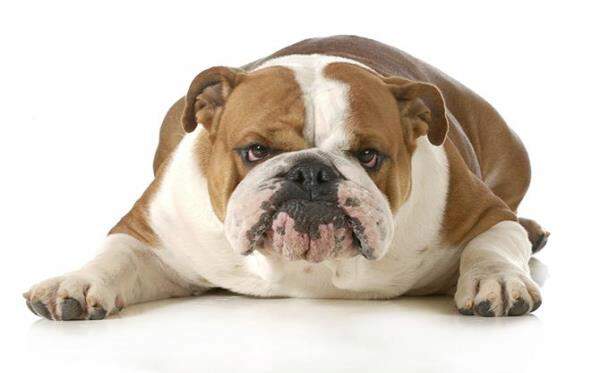Obesity is the number one cause of preventable health issues in dogs, with well over a third of all dogs in the UK thought to be overweight or obese. Excess weight can cause a wide range of health issues including heart problems, diabetes, arthritis and many more, so it is vital that we help our dogs maintain a healthy weight and reduce the chance of them becoming overweight.
Here are my five top tips to help you ensure your dog maintains a health weight:
1. Start young
Healthy weight control starts during puppyhood as just as with children, weight gain at a young age tends to lead to lifelong issues with weight. Getting your puppy’s diet right during those crucial first few months will lay the foundations for maintaining a healthy weight throughout their lives, and massively reduce their chances of suffering from serious, life-limiting health problems as they age.
2. Food choice
There are many ways to feed, from a totally homemade diet to complete dry food, and some regimes make it easier to manage weight than others. Complete dry foods have the advantage of being easy and relatively cheap to feed, but one of their downsides is the fact that they are so concentrated - even feeding a few grams more than your puppy requires every day can quickly lead to excessive weight gain. Feeding fresh or homemade meals on the other hand is more work, but because the food is much less energy-dense, it is harder to significantly over feed.
3. Weigh regularly
Whatever feeding regime you choose for your dog, the two most important rules to follow when monitoring their food intake are firstly to weigh your dog regularly and secondly to closely monitor their body condition. Regular weighing allows you to adjust the amount of calories you’re feeding everyday to match their requirements accurately. Dry foods all have a feeding guide which tell you how much to feed based on their weight, and this is the best place to start when working out how much your dog needs each day.
4. Condition scoring
Even with an up-to-date value for your dog’s weight, and an accurate feeding plan in place, it is still possible to over or under feed. Every dog is an individual and there are lots of variations in lifestyle and genetics that can influence how much energy they need every day, so it’s important to monitor how they are responding to their diet on a regular basis. The best way to do this is using a simple process called body condition scoring. At it’s simplest, this just involves looking at your puppy and then running your hands over their ribs and hips.
A healthy dog will have a thin but definite covering of fat under their skin, but not so much that the bones of the ribs and hips are difficult to see or feel. You should easily be able to feel the ribs when you run your hands over their flanks, but they shouldn’t be obvious when looking at them. If it’s hard to feel the ribs, and there’s no obvious waist between the ribs and hips, your dog is carrying a little too much body fat and you should slightly reduce their daily food ration. If the ribs and hips are prominent and very easy to feel, increase their food until they reach a healthier body condition.
5. Treat with care
It's so easy to add a few hundred extra calories to your dog's intake every day just by giving them a few snacks or training treats. So, make sure you check the calorific content of any snacks and treats your dog receives every day, and if these add up to a significant portion of your dog's daily calory budget, look for lower calorie alternatives such as raw veg or pieces of plain, unseasoned popcorn,
If you follow these basic principles, and make sure you’re feeding a healthy diet of freshly made food or good quality processed food, you’ll ensure your dog grows up at a healthy weight and can enjoy a long, happy and healthy life.

